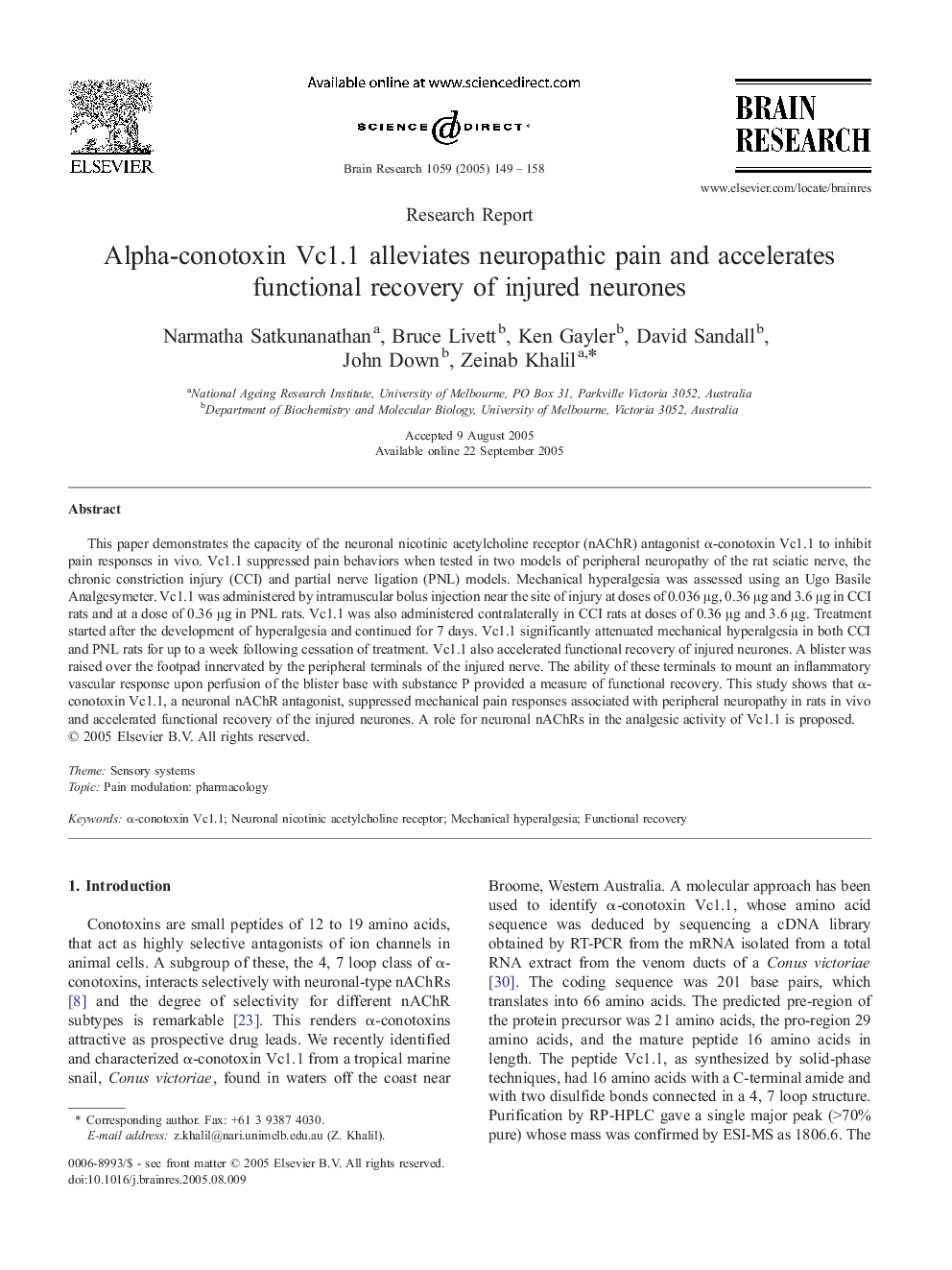| Article ID | Journal | Published Year | Pages | File Type |
|---|---|---|---|---|
| 9415871 | Brain Research | 2005 | 10 Pages |
Abstract
This paper demonstrates the capacity of the neuronal nicotinic acetylcholine receptor (nAChR) antagonist α-conotoxin Vc1.1 to inhibit pain responses in vivo. Vc1.1 suppressed pain behaviors when tested in two models of peripheral neuropathy of the rat sciatic nerve, the chronic constriction injury (CCI) and partial nerve ligation (PNL) models. Mechanical hyperalgesia was assessed using an Ugo Basile Analgesymeter. Vc1.1 was administered by intramuscular bolus injection near the site of injury at doses of 0.036 μg, 0.36 μg and 3.6 μg in CCI rats and at a dose of 0.36 μg in PNL rats. Vc1.1 was also administered contralaterally in CCI rats at doses of 0.36 μg and 3.6 μg. Treatment started after the development of hyperalgesia and continued for 7 days. Vc1.1 significantly attenuated mechanical hyperalgesia in both CCI and PNL rats for up to a week following cessation of treatment. Vc1.1 also accelerated functional recovery of injured neurones. A blister was raised over the footpad innervated by the peripheral terminals of the injured nerve. The ability of these terminals to mount an inflammatory vascular response upon perfusion of the blister base with substance P provided a measure of functional recovery. This study shows that α-conotoxin Vc1.1, a neuronal nAChR antagonist, suppressed mechanical pain responses associated with peripheral neuropathy in rats in vivo and accelerated functional recovery of the injured neurones. A role for neuronal nAChRs in the analgesic activity of Vc1.1 is proposed.
Keywords
Related Topics
Life Sciences
Neuroscience
Neuroscience (General)
Authors
Narmatha Satkunanathan, Bruce Livett, Ken Gayler, David Sandall, John Down, Zeinab Khalil,
